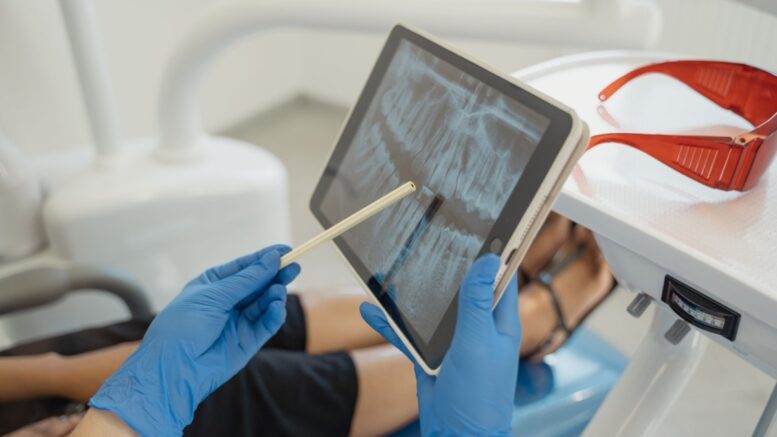A century ago, the average person wouldn’t have imagined that dentistry would advance at a break-neck pace. A handful would’ve predicted that modern technologies and techniques would make it possible to restore missing or damaged teeth from accidents and diseases. Thanks to inventor Pen-Ingvar Branemark, the once unconceived concept of tooth implantation has become a reality.
Even though 70 years have passed since their invention, dental implants are still common and effective in restoring function to the teeth. In the US and EU alone, over 2.6 million people undergo implantation annually. That exceeds the number of hip and knee replacement procedures performed yearly worldwide. Before now, dental patients could only have dentures and bridges. But that’s no longer the case.
Introduction to these Fixtures
Dental implants are small titanium screws that are surgically placed in a patient’s jawbone. They form the base of prosthetic teeth: Artificial teeth that look, feel, and function like their natural counterparts. The prosthetics are fused to the implants via a process known as osseointegration to make the patient’s teeth strong and durable. Dental implants are of three types:
- Zygomatic
- Subperiosteal
- Endosteal
Not all patients undergo implantation immediately, especially those with bone deficiency. In this case, a bone grafting procedure (or sinus lift for upper jaw implantation) is required to build enough density for the implants. Besides, they need enough space for osseointegration and natural healing.
Bone density is a critical factor in dental implant procedures, which explains why children are not suitable candidates. Their jaws are still developing. As a result, bone mass is insufficient for implantation. Bone resorption is more pronounced for seniors, which is known to decrease density. This condition is a result of ageing, unhealthy habits, and injuries.
How Does the Procedure Work?
Dental implantation is a multi-step process that follows a tooth extraction. It takes anywhere from a month to a year to complete, depending on what checks and balances are in place. The procedure entails:
Examination
The dentist examines the teeth in need of replacement and takes several X-rays via CT scans. The dental surgeon also determines if the patient is eligible for implantation, based on various factors, like:
- Absence of infection
- Implant’s width
- Medical conditions
- Gingival attachment size
- No signs of peri-implant radiolucency
- Immobility
- Unhealthy habits, like drinking and smoking
Using these findings, the dentist develops a treatment plan. This plan helps determine the extent of tooth extraction and the number of implants.

Extraction
An oral surgeon cleans and preps the extraction sites for surgery. They’re then administered anaesthesia to make the process more comfortable for the patient. Once numbed, the surgeon makes tiny incisions in the gumline (for decayed or chipped-off tooth). Extraction forceps help to loosen and remove the teeth. The process may take 30 minutes or more.
Having extracted the teeth, the surgeon disinfects the area. A dental bone graft may be required to ensure adequate density. The surgeon then places gauze over the extraction site. The patient would need to apply pressure to reduce bleeding and speed up healing.
Implant Insertion
Once the extraction sites have healed (which may take a couple of months or more), the dentist places the implants. These tiny fixtures fit snugly into the bone, fusing to it within a few months. The patient wears a detachable dental appliance, such as dentures or a bridge, to provide temporary support and ease the adjustment.
Abutment Installation
The tooth loss treatment takes an important turn at this stage. Implants don’t directly hold the crowns firmly in place. They need some sort of anchor to do that, which is where the abutment comes in. This implant support prevents the crown from moving and slipping. It also restores the patient’s bite force (up to 90%). The dentist screws the abutment to the implant and seals the gum line with dental cement.
Crown Attachment
The dental crown is the final piece in the tooth replacement treatment. It’s part of the dental implant that the patient can see and feel. Dental crowns comprise materials like ceramic, porcelain, and stainless steel. They are custom-made to match the surrounding natural teeth.
Before this process, the dentist would have created an impression of the patient’s bite to ensure that the crown fits properly. Once it’s fitted, a crown cement is used to hold it in place. An alternative is to screw the crown into the hole in the abutment. This keeps it from moving, so the tooth feels natural and looks attractive.
Benefits
Patients who undergo dental implantation enjoy these benefits:
Improved Smile and Confidence
Nothing says beauty and self-confidence like a bright smile. Dental implants ensure people experience this feeling once again. Dental restorations are indistinguishable from natural teeth. As such, wearers have no problem expressing themselves in public.

Greater Speech and Swallowing
Just as with natural teeth, dental implants make it easier to chew and speak. They feel less discomfort and pain, particularly when they chew hot, cold, and hard meals. Given their sturdiness, the implants are less prone to damage.
Healthy Teeth and Mouth
Dental implants don’t rest on a natural tooth’s root, unlike dentures. They fit into the jawbone. In doing so, they don’t put pressure on the remaining natural teeth. This preserves bone health and prevents gum recession and bone loss.
Increased Oral Hygiene
It’s easy to maintain dental implants. They don’t require removal when brushing, flossing or cleaning.
Durability
Dental implants are made from titanium, a durable material. They don’t chip or break off, which makes them extremely durable. They likely last a lifetime.
Risks
Dental implant procedures are safe. However, some rare but treatable complications may occur. The most common ones include:
- Crown fracture
- Infection around the implants
- Sinus-related complications
- Implant loosening (when not properly done)
- Dental implant rejection
- Injury to the nerve roots and surrounding tissues
Affected patients may experience pain and trouble chewing, speaking, or swallowing. Such experiences necessitate adjusting or replacing the implants.
Conclusion
Dental implants represent the pinnacle of teeth replacement as they are much safer and more effective. However, the implantation process is far from simple. Besides, it requires time and professionalism to get the best result. The upside, however, is a set of natural-looking, healthy teeth that function optimally and last long. Want that billion-dollar smile? Give these fixtures a try. When you’re ready to get one, you can check out this dentist in Kelowna to get started.
